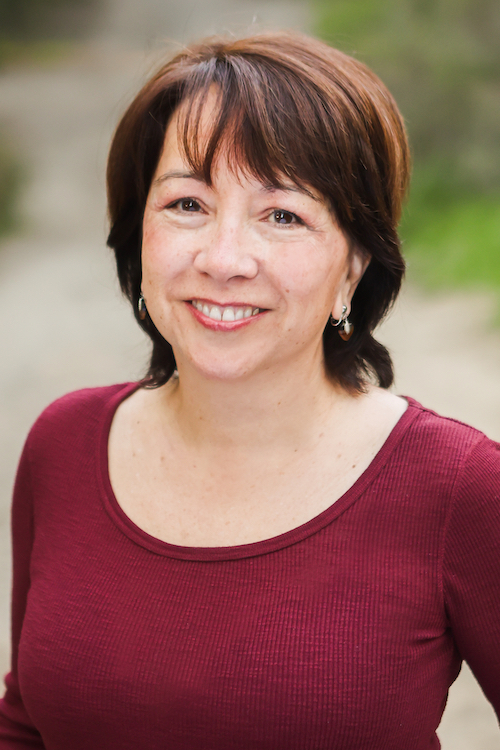The following is an interview with author Cara Lopez Lee regarding the upcoming release of her historical novel, Candlelight Bridge, through FlowerSong Press. In this interview, Fanbase Press Editor-in-Chief Barbra Dillon chats with Lopez Lee about her creative process in bringing the personally inspired story and characters to life on the page, what she hopes that readers may take away from the mental and emotional impact of an immigration experience, and more!
Barbra Dillon, Fanbase Press Editor-in-Chief: Congratulations on the upcoming release of Candlelight Bridge! For those who may be unfamiliar, how would you describe the story’s premise?
Cara Lopez Lee: Thank you! This historical novel is an intense immigrant saga that stretches from 1910 to 1934. Here’s a glimpse: In 1910, Candelaria Rivera and Yankee Wong flee a rising storm of revolution and loss in their far-flung countries of Mexico and China. Their stories collide in El Paso, Texas, where they strive to make a home in a world that does not want them, until a terrible desire threatens to destroy their lives. Candlelight Bridge is not a romance but a tale of grudging partners struggling to survive the American Dream.
BD: What can you tell us about your creative process in bringing this story and characters to life on the page, and how much of your own experiences influenced your narrative?

CLL: I grew up with my Mexican Chinese grandma, and I always begged her for family stories. Candlelight Bridge is inspired by those stories: tales of secret immigrants, their mixed-race children, and family trauma passed like a torch from generation to generation. All my life, people have asked me, “What are you?” Candlelight Bridge is part of my answer. I hope it also leads readers to ponder the bigger American question: Who are we?
My research took me to China, where I found my great-grandfather’s village in Toisan, interviewed a 99-year-old cousin about local history, and celebrated the Ching Ming tomb sweeping festival—walking with my distant cousins to their cemetery to feast with the dead. I also took research trips to the Tex-Mex borderlands of El Paso, Juarez, and the Chihuahuan desert. I visited pueblos and indigenous ruins, interviewed locals and historians, and began to imagine a fictional Mexican village, a family, and a desert journey that would stand in for the real-life migration of my ancestors.
For my first draft, I trusted my subconscious to know the story that wanted to be told. Still, it was a big project, and I sometimes worried I’d never finish…until I started to keep an outline, but only after I completed each chapter. I’d ask myself questions about what I’d just written: What’s the character’s motivation, what’s the conflict, what changes? My answers revealed what needed work. Maybe a motivation was unclear, a conflict needed higher stakes, or nothing had changed in five pages! Once I made my notes, I was free to move on, and revise later. I used to agonize over constant editing, spinning my wheels in the mud for days. Answers came faster when I kept moving. Prioritizing momentum also helped create better pacing throughout the story.
BD: At Fanbase Press, our #StoriesMatter initiative endeavors to highlight the impact that stories can have on audiences of various mediums. How do you feel that Candelaria and Yan Chi’s story – and the depiction of the mental and emotional impact of the immigration experience – may connect with and impact readers?
CLL: I believe the desire to find our place in the world is universal, and all my stories are about the search for home and belonging. This story’s main characters are refugees and immigrants who often exemplify the kind of courage Americans value most: They leave the familiar in hope of a better life, take a journey into the unknown, make sacrifices for those they love, and make a new start in an unwelcoming place.
Despite our admiration of those values, we live in times of increased fear and suspicion of immigrants. I hope my book helps decrease the temptation to assume that those who are different from us must be our opponents and helps increase people’s curiosity to learn the stories of others.
BD: Are there any upcoming projects on which you are currently working that you would like to share with our readers?
CLL: I’ve begun writing the sequel to Candlelight Bridge, which will pick up where the first story left off—in 1934. This time, the main characters will come from the next generation of the Rivera and Wong families, focusing on two of the children from the end of the first novel. This next book will take them to the Eastside of Los Angeles, the Chinese cities of Guangzhou and Hong Kong, and back to the borderland of El Paso and Juarez. The story will take readers from the Great Depression, through World War Two, and beyond…
BD: Lastly, what is the best way for our readers to find more information about Candlelight Bridge?
CLL: To find out more about Candlelight Bridge, my other books, or my upcoming performances telling personal stories onstage, look for @CaraLopezLee on my socials, including Instagram, Facebook, and TikTok. My website is CaraLopezLee.com, which has several links to buy Candlelight Bridge. I recommend buying from FlowerSongPress.com or Bookshop.org, but if you prefer Amazon. I’ll still and always thank you for supporting books.

